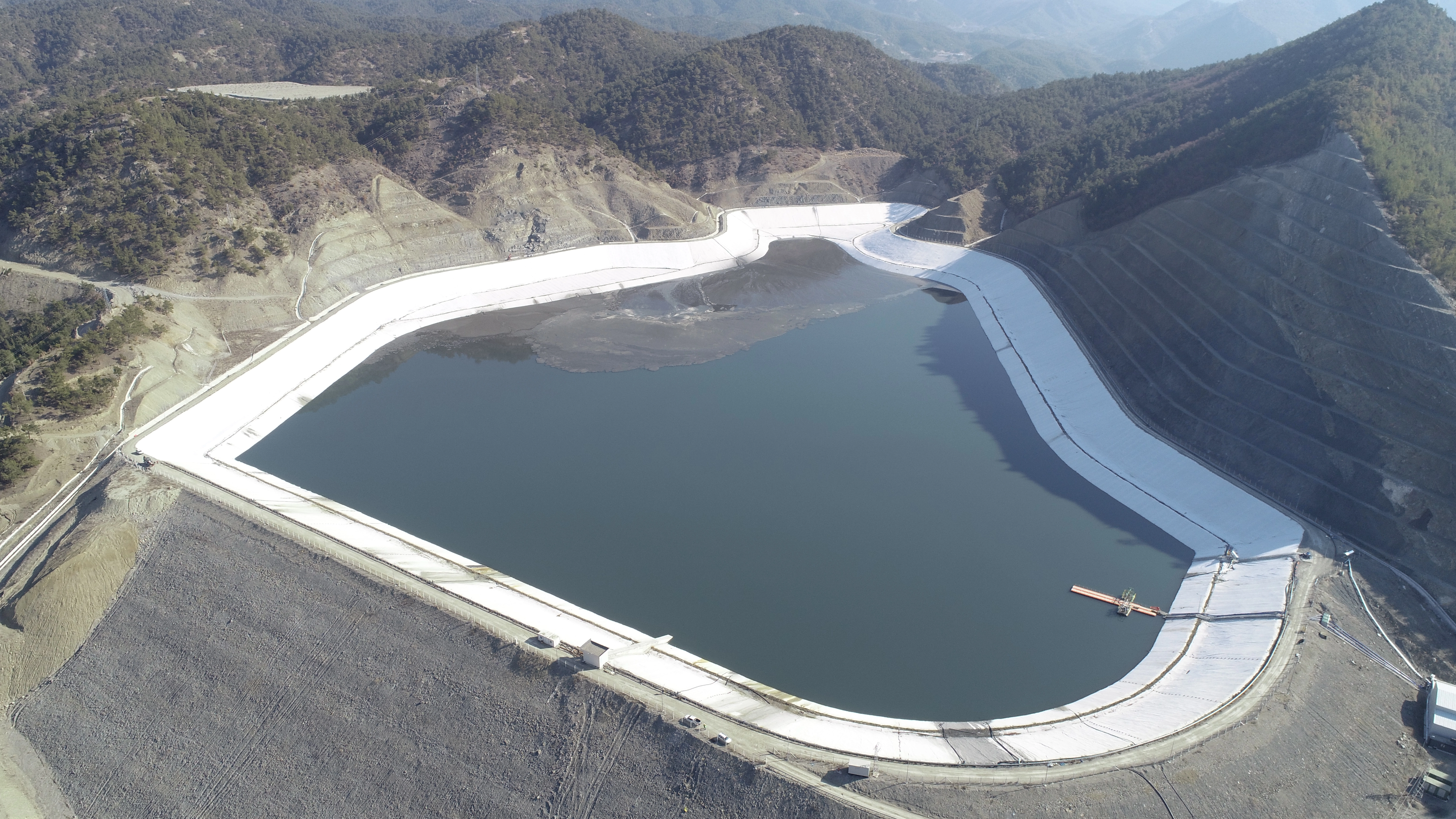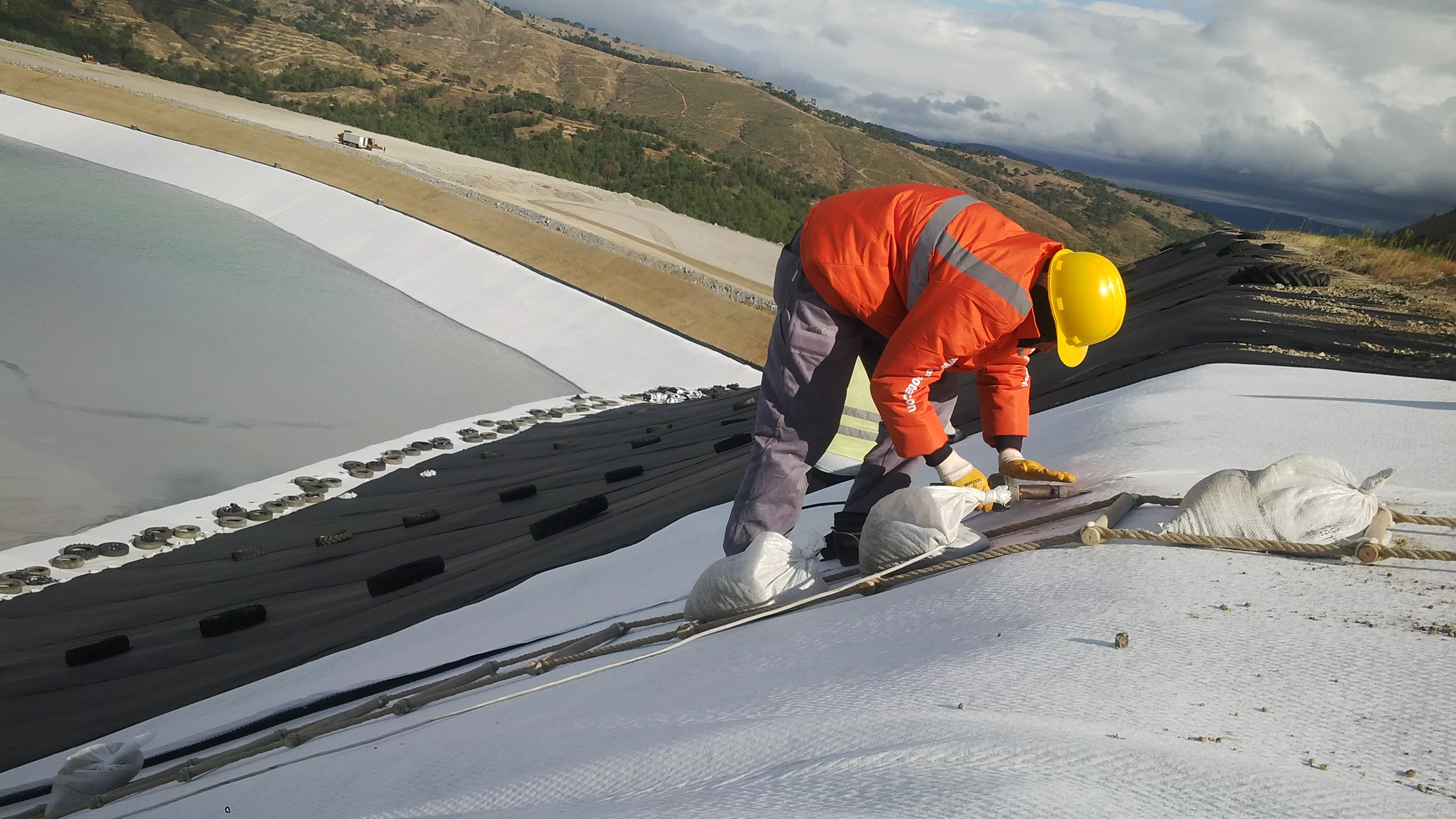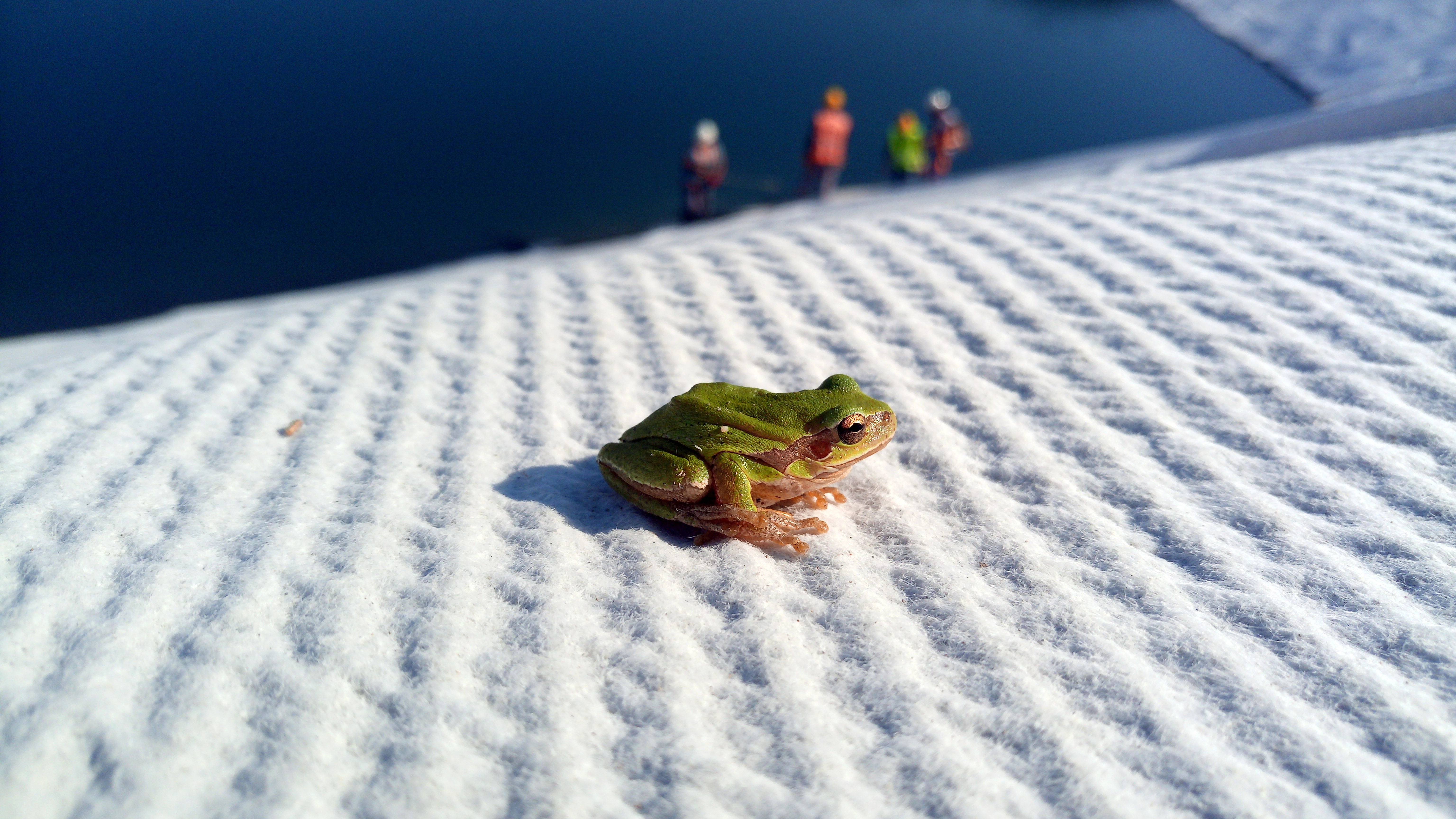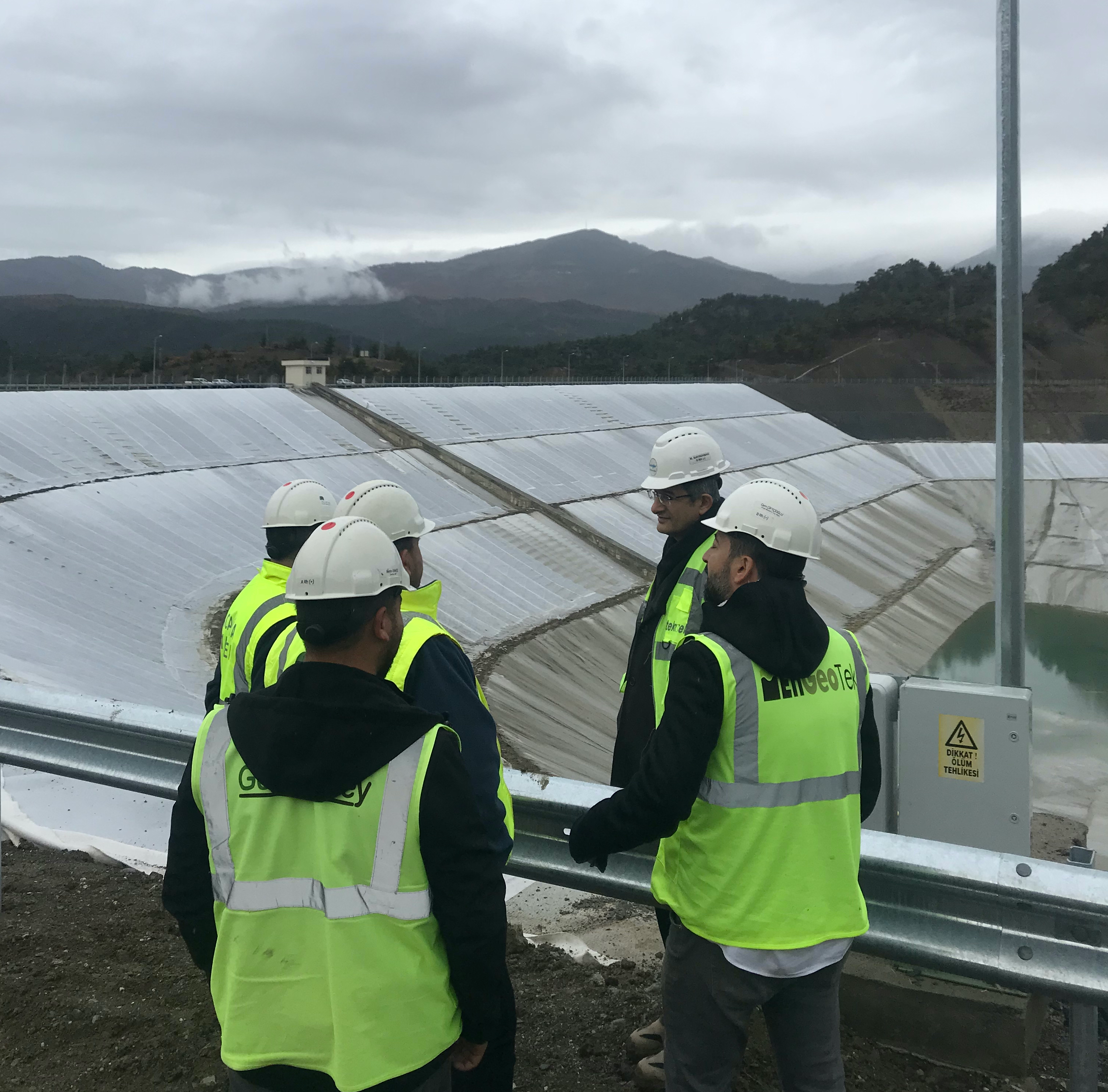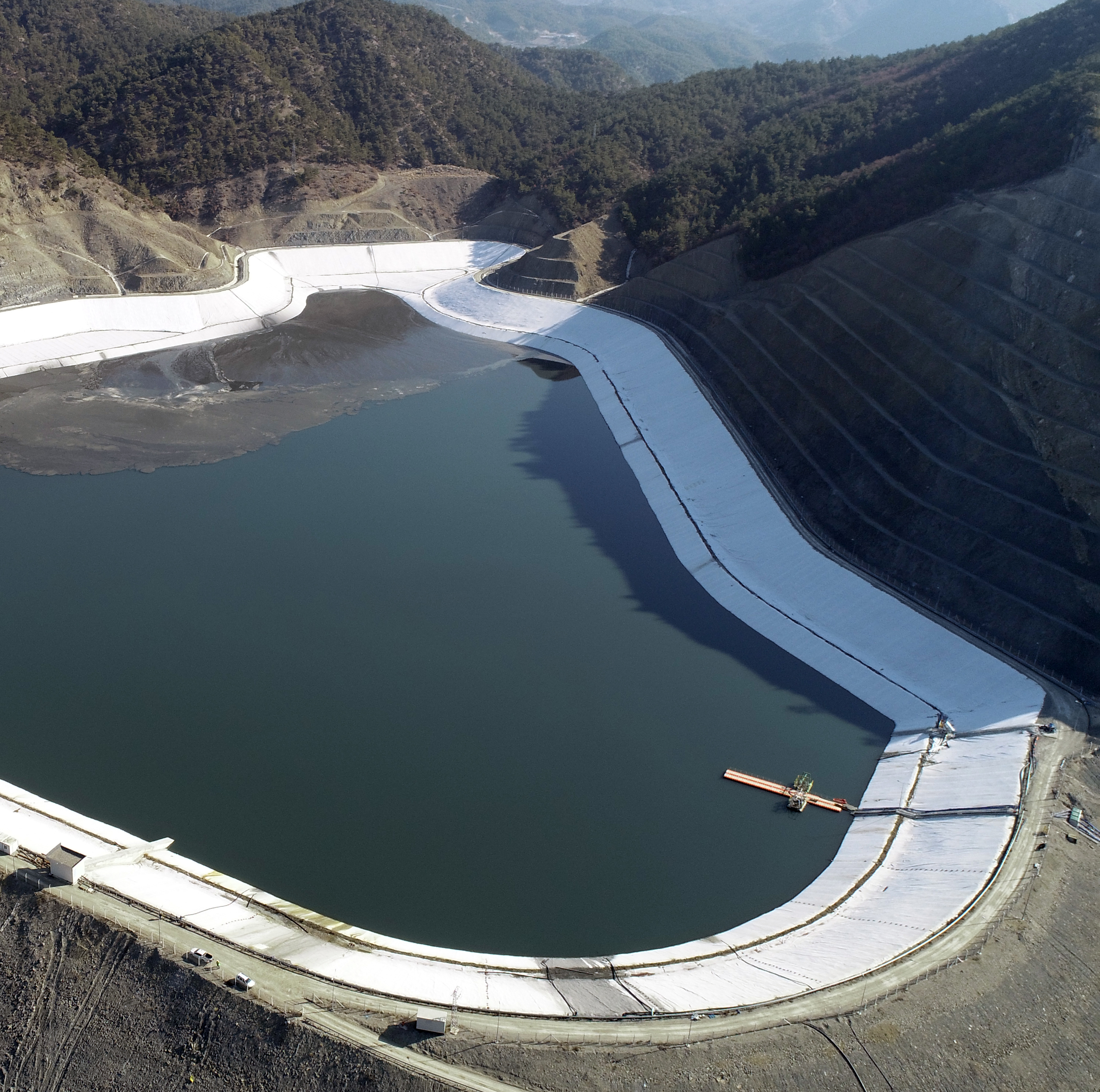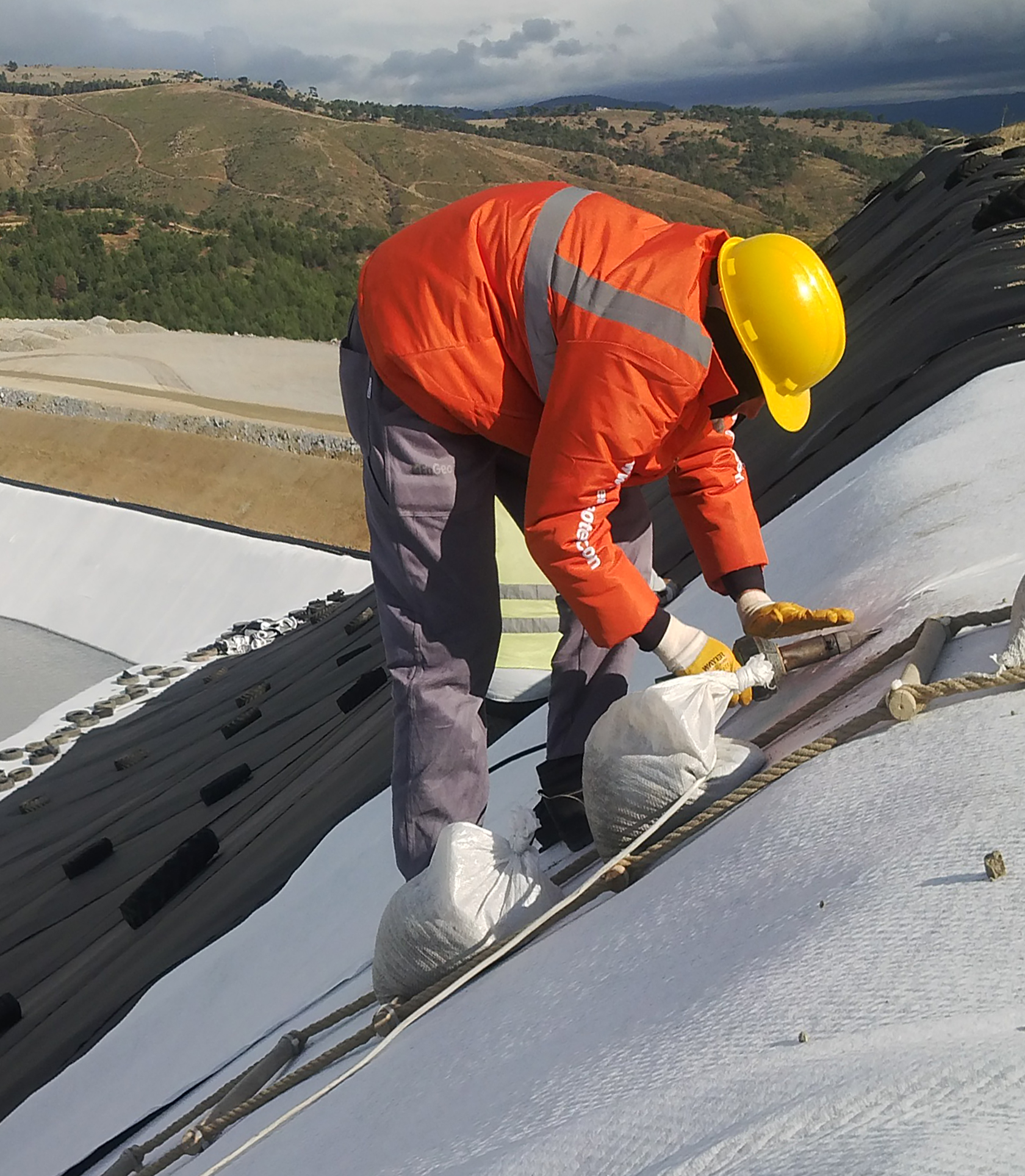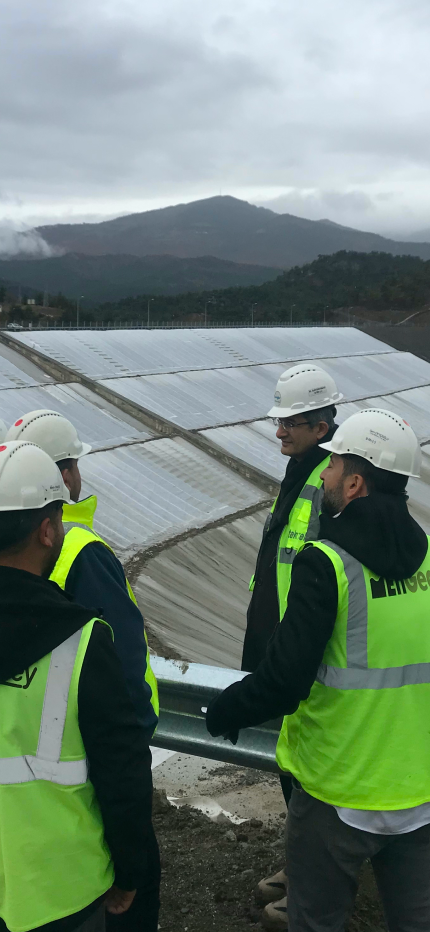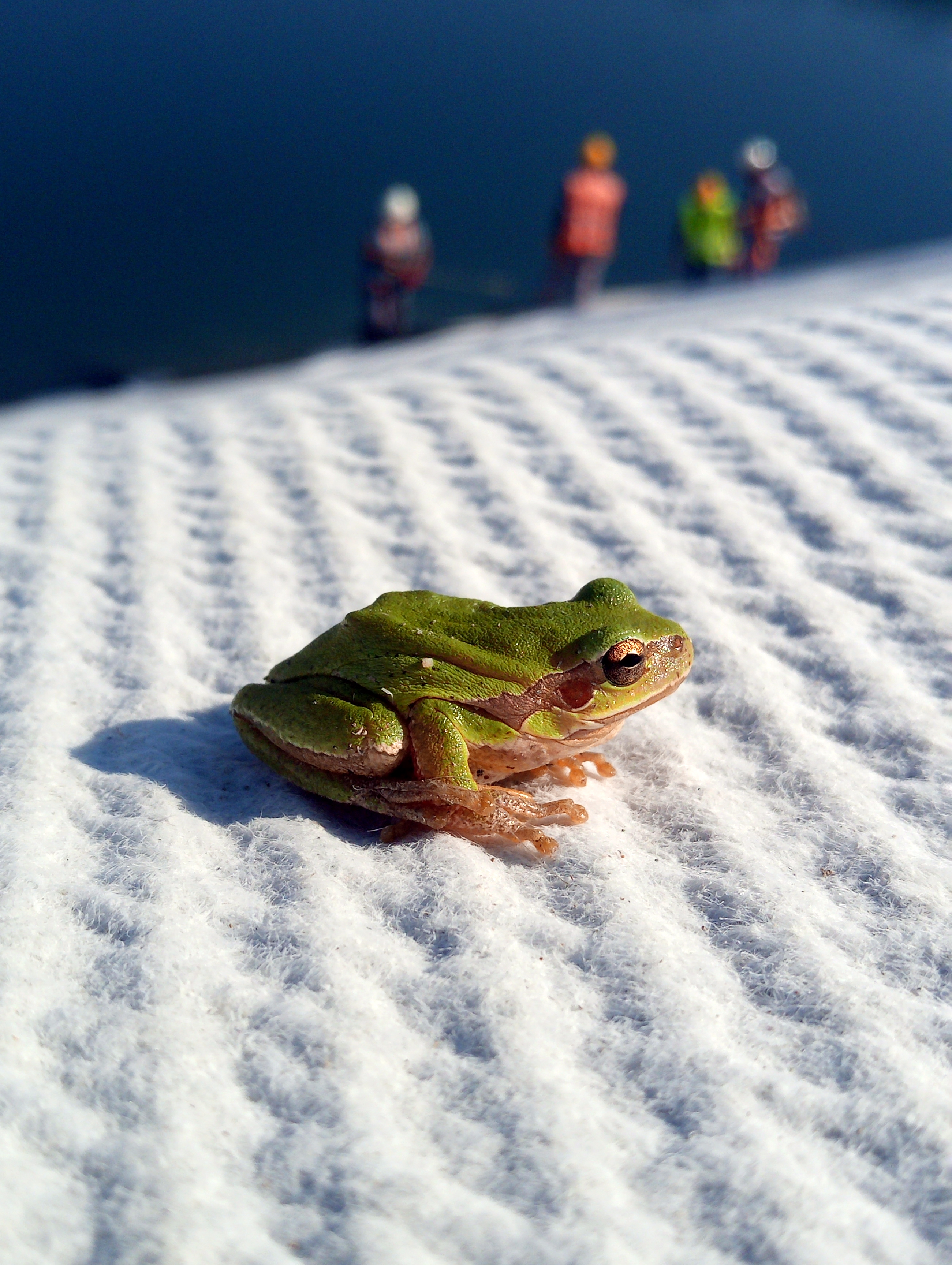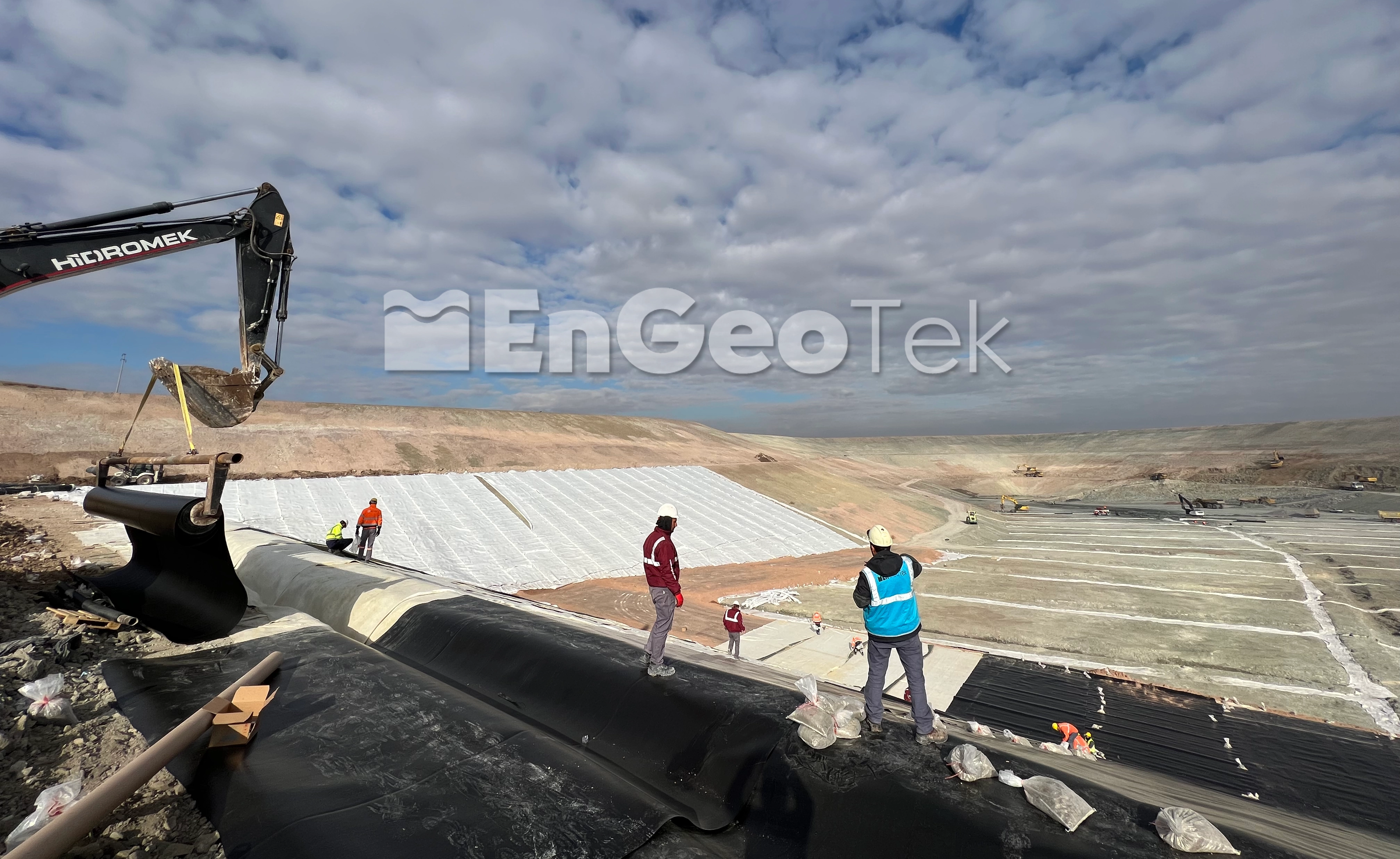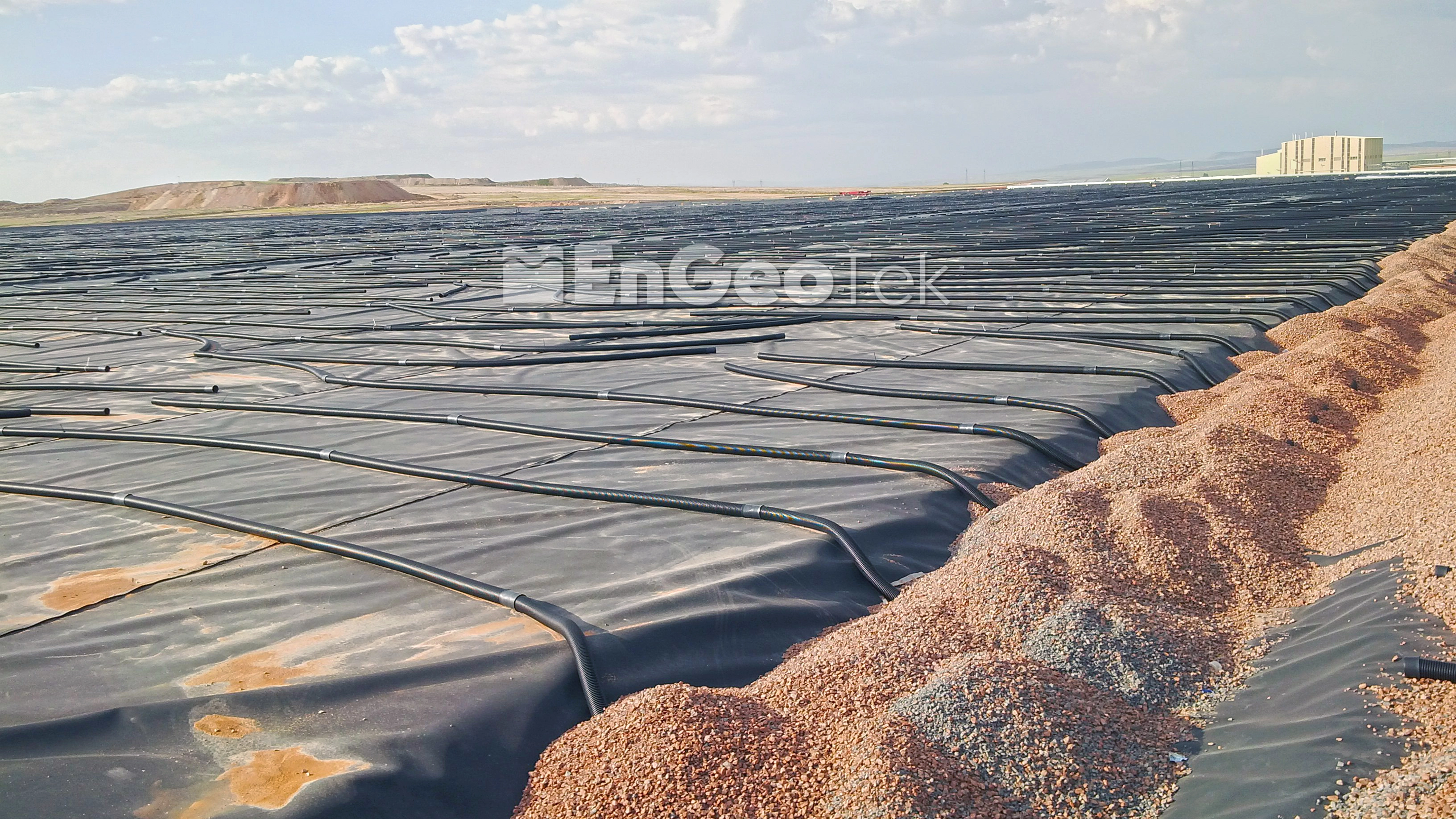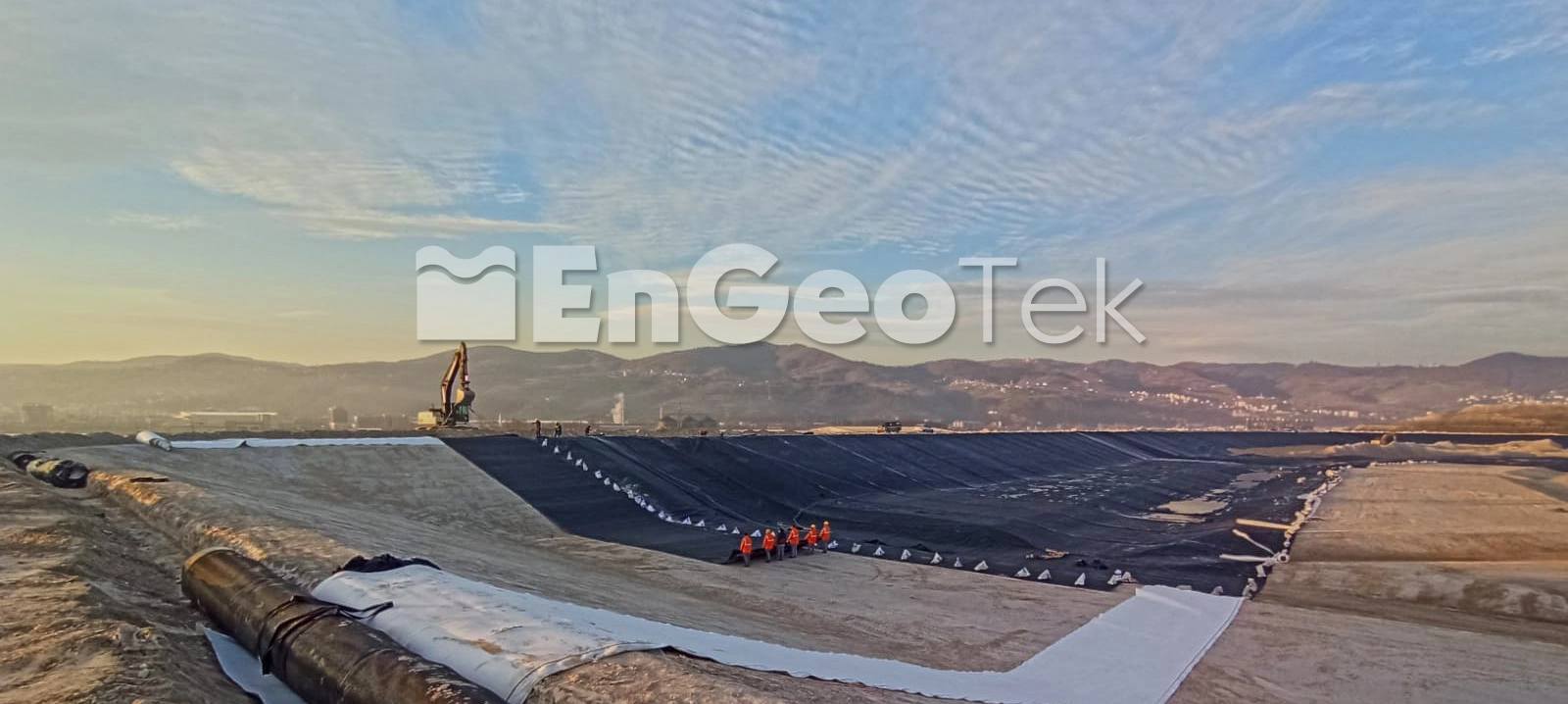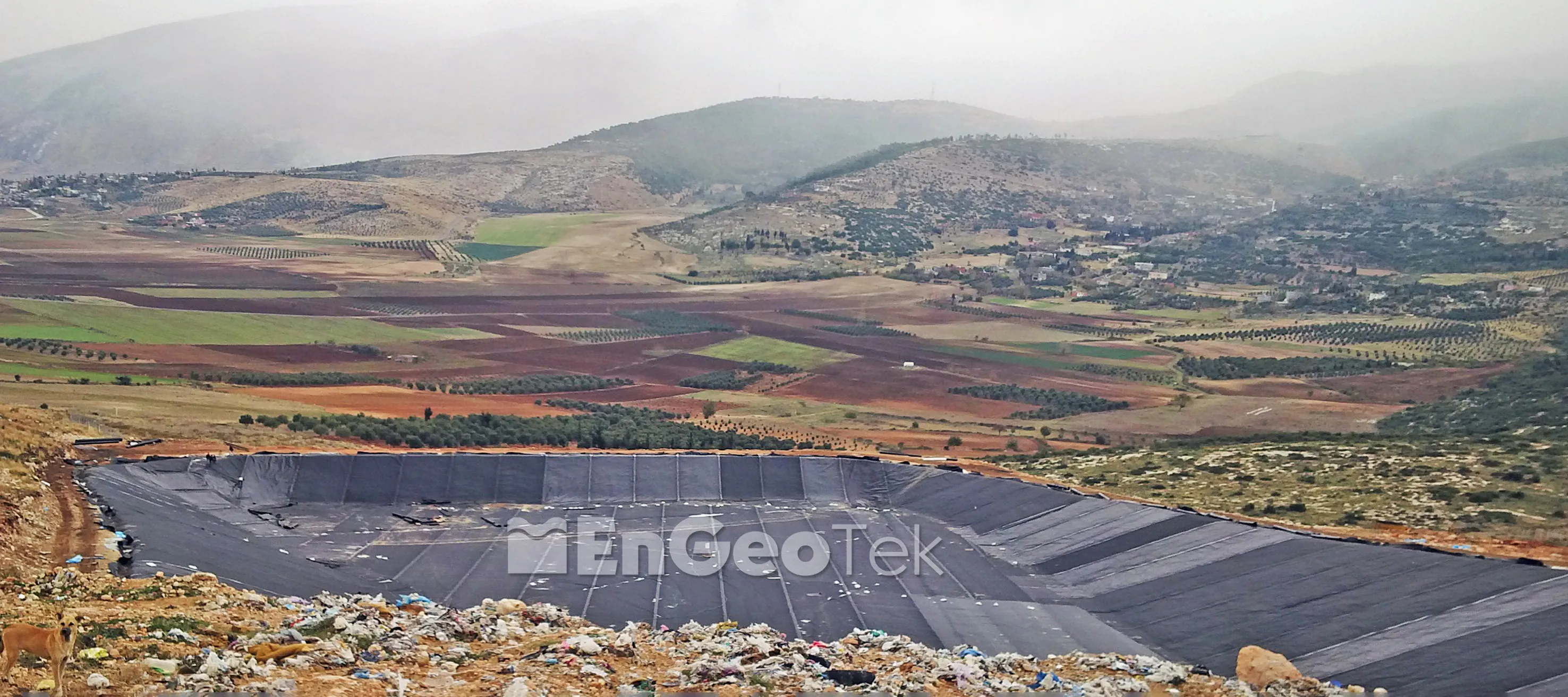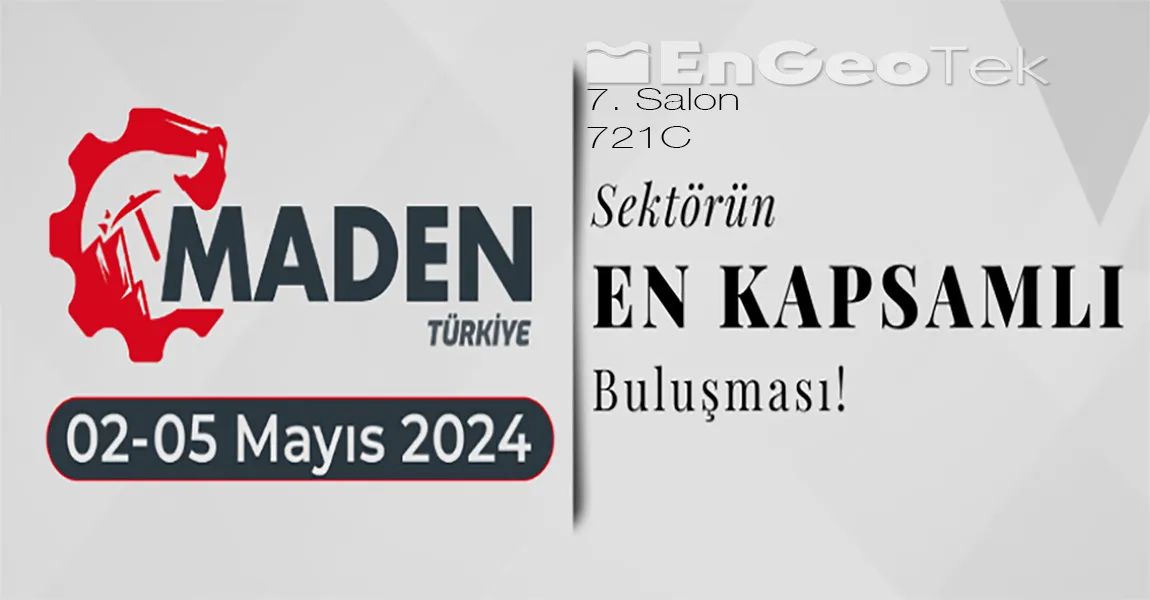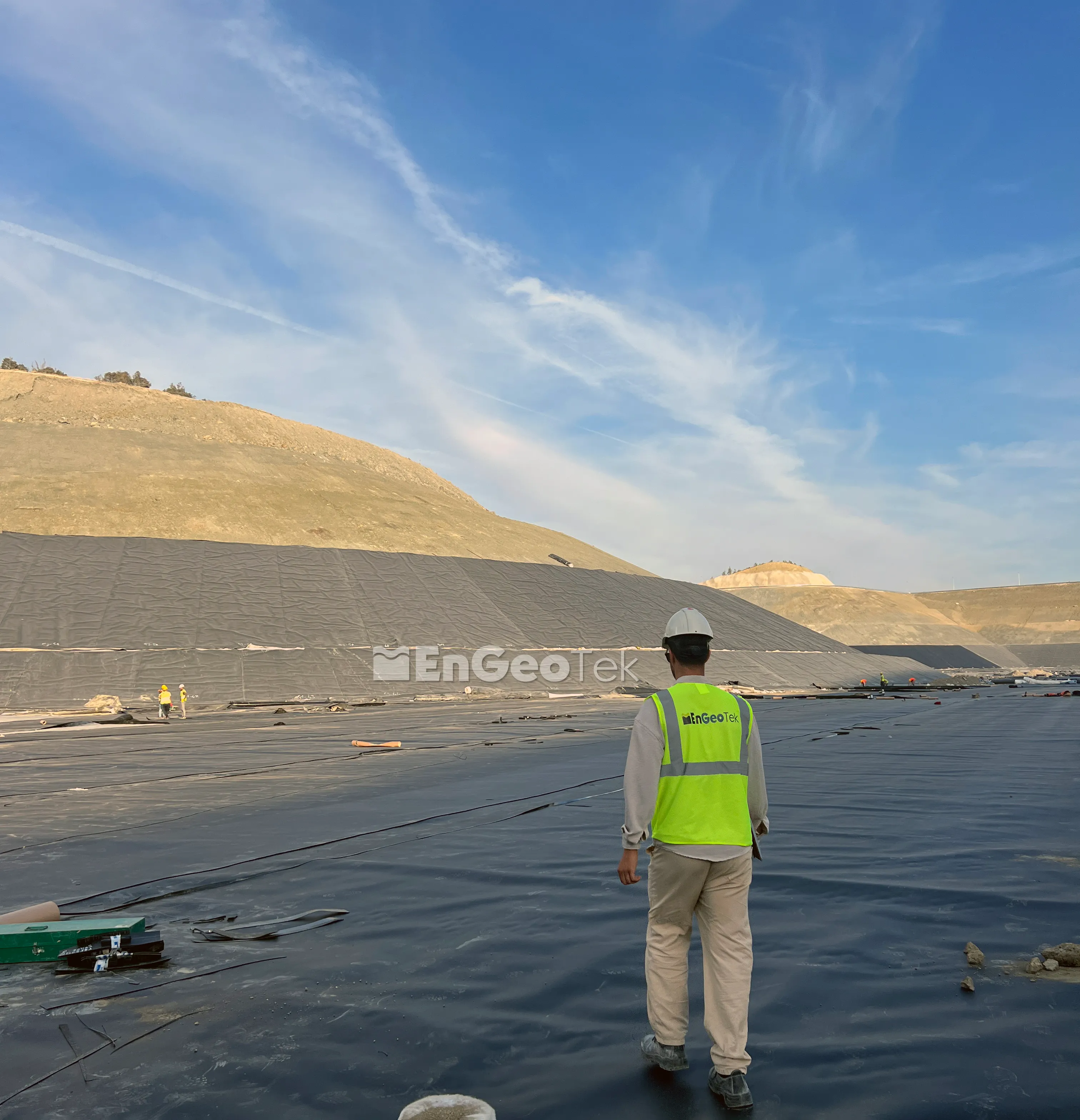
They are flexible, polymer sheets with very low permeability, used to provide impermeability and/or as a surface protective material. They have different names and different areas of use depending on the raw materials used in production. (HDPE, LLDPE, EPDM, VFPE, PVC, PP) Available in different thicknesses and colors.
Usage areas:
Waste Storage Facilities, Water Treatment Facilities, Mine Waste Dams, Tunnels, Pools, Canals, Ponds, Tank Bottoms, Oil Fields, building foundations and curtains, terraces and roofs…
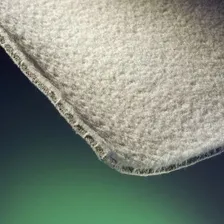
It is an impermeable layer consisting of sodium bentonite between two geotextile and/or geomembrane layers joined together by needling. There are different types depending on the clay content and the geotextiles used.
Usage areas:
Waste Storage Facilities, Water Treatment Facilities, Mine Waste Dams, Tunnels, Pools, Channels, Ponds, Tank Bottoms, Oil Fields, building foundations and curtains, terraces and roofs…
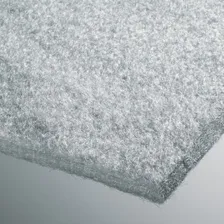
It is produced by mechanical needling method or mechanically bonded continuous fiber using 100% pure polypropylene (PP) or polyester (PES) raw material. If desired, it can be pressed with heat treatment and manufactured with extra UV resistance. They are used for protection, separation, filtration and drainage purposes.
Usage areas:
They are used against high mechanical loads and application damage in highways and railways, geomembrane protection, asphalt reinforcement, sports fields, mine waste dams, solid waste storage areas, irrigation channels, pools, ponds, building and foundation curtains, terraces and roofs.

They are synthetic drainage materials produced from High Density Polyethylene (HDPE) Resin.
They can be used individually or as composites by laminating the bottom and/or top with non-woven geotextile.
In addition to performing the same function as sand stone and gravel from a geotechnical perspective, it also provides extra advantages such as time, excavation and cost.
Increases capacity in storage area.
Usage areas :
They are used in Solid Waste Storage Areas, wall and foundation insulation, mine waste storage areas, surface drainage, leak detection pools, methane gas collection systems, retaining walls, soil retention structures and all drainage systems.
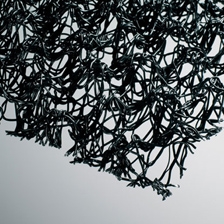
Erosion Control mats provide long-term protection against surface erosion on all slopes.
Thanks to its physical structure, it holds the roots of plants in the soil and protects the soil against erosion forces.
It prevents flow on slopes and provides high stabilization with plant roots.
Usage areas:
Surface Erosion Protection, soil retention structures, slope stabilization, land filling, water channels.
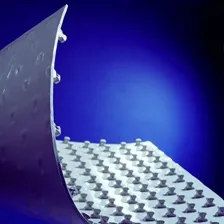
It is produced from high density Polyethylene material.
It is used by fixing the concrete to the concrete to protect it from mechanical damage and corrosion.
Due to its physical structure, it adheres to the concrete to the maximum extent and creates a monolithic appearance.
It is the primary protection layer used to extend the life of concrete.
Usage areas :
Waste Water Storage systems, water channels, well and sewer systems, manholes, tunnels
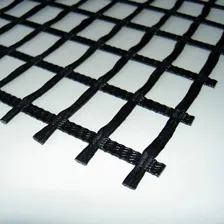
They are high-strength materials specially designed for soils with different structures in nature.
When filler or granular material is laid on top, the material grains settle between the cells of the geogrid and interlock with the material.
The filling material locked within the highly durable structure of the geogrid creates a reinforced ground. They are produced from polyester and/or high density polyethylene according to different strengths and mesh openings.
Combining high strength and low creep properties, geogrids are used to strengthen fine, medium and coarse grained soils.
Usage areas :
Highways, railways, storage areas, retaining structures, ground reinforcement, block walls..

These boxes, made of hexagonal steel wire mesh, are manufactured to fill rocks and stones.
Natural looking, especially in regions where stone and rock are easy to obtain,
It is possible to produce environmentally friendly and economical solutions.
Usage areas:
Slope rehabilitation, combating erosion, wet stream beds, shore and sediment protection, retaining structures, railway-highway applications
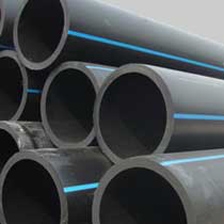
They are produced from polyethylene polypropylene raw materials as corrugated or plain.
Usage areas :
Water and wastewater transportation, drinking water lines, sea water treatment plants, biological treatment plants, swimming pool pipes, sea discharge lines, gravity flow water lines, gas power plants, garden irrigation lines, compressed air lines, cooling-heating lines, pre-insulated sheathing for pipes, sewer lines etc.


